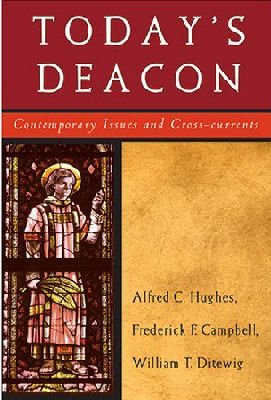
|
Posted January 5, 2007
Book: Today’s Deacon: Contemporary Issues and Cross-Currents By: Alfred C. Hughes, Frederick F. Campbell and William T. Ditewig Paulist Press. New York. 2006. Pp. 94 An Excerpt from the Jacket:
An Excerpt from the Book: What is the relationship of the diaconate to the lay faithful? How does the diaconate work to activate the laity in their specific role in the church and in the world? Now this is going to be a very difficult thing to explain and to live out. I don’t know how many times I hear people refer to “lay deacons.” there is no such thing. But they have that sense of confusion. As the Directory points out, following again the Directory from Rome, permanent deacons are in an especially advantageous place, that is to bring the work of the church to the world around us and to activate the laity. The vast majority of deacons are not full-time members of the church organization. The majority of deacons work at a profession in the world. It is especially because they are part of this world, but yet a sacrament of Christ in his body the church, that they are in this powerful position of demonstrating to the laity how specifically the vocation to holiness can be pursued and can be achieved in the very work in the world that they do. I am not suggesting that deacons become street corner preachers. I am suggesting that simply by the way that a deacon lives, by the way he speaks, and by the way he relates to other people, he is going to manifest the power of the gospel and become one of the most effective evangelizers. Table of Contents: A note of introduction Keynote Addresses: Restorative justice The impact of the New National Directory for the Formation, Ministry and Life of Permanent Deacons in the United States Implementation strategies for the New National Directory of Deacons Responses to the Keynotes: Response to Archbishop Hughes: An experience of restorative justice Response to Bishop Campbell: The impact of the New National Directory Response to Deacon Ditewig: Community, charism, and competence |
|
